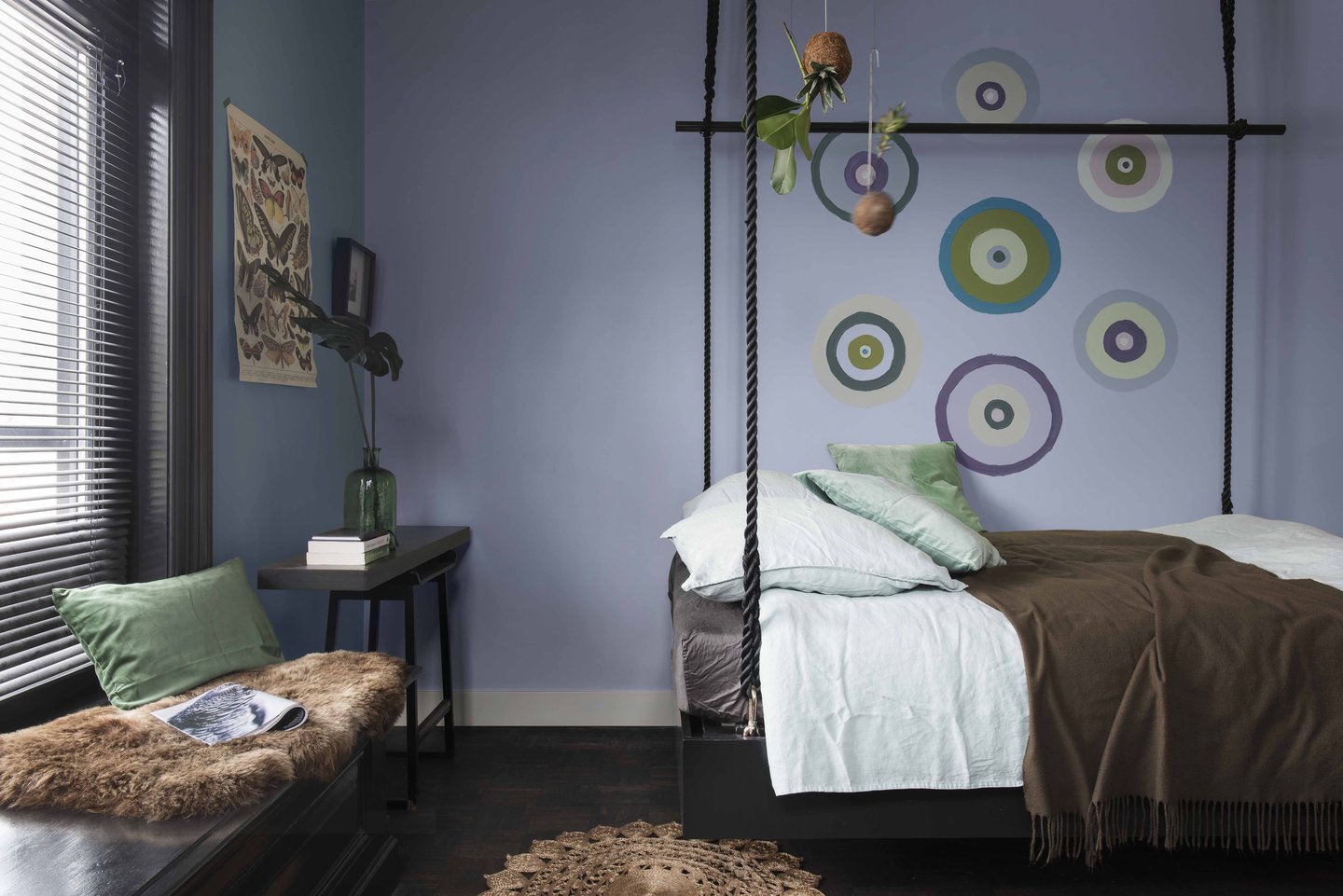
New Romanticism is one of the 4 trends devised by the Dulux design team and one that we’re currently celebrating in the studio with some carefully selected and curated material displays which you can find on our 'island’ display area as you enter the space.
We talked about all the trends when working on the launch of Colour Futures 2017 back in October but now seems like the perfect time to go a little deeper into this particular trend – one that is very much inspired by concerns surrounding the environment and a ‘getting back to nature’ within it’s narrative.



As we become increasingly aware of the threats upon our planet and it’s natural habitats we find a greater awareness of our own impact upon it and with a desire to reconnect with nature.

Marianne Shillingford, Creative Director at Dulux says: “Lush greens and smoky violets team cleverly with wicker and natural wood which really come back into their own as affordable materials which reconnect our homes with the earth and nature.
The look is rooted in the found, revamped and restored rather than the pristine new and plants are everywhere, improving the air we breathe while they fill a space with life, colour and texture. Use strong colour to connect pieces of painted furniture that don’t match and add small clever touches of sharp cool green alongside broader areas painted in warmer verdant shades.’

We’ve pulled together materials that not only embody the colour palette of the trend but also the sustainable and recycled theme. Buxkin’s new recycled felt surfaces sit alongside samples of their already established and highly popular recycled leather pieces, which have a sophisticated 3-D linear design.
We’ve got samples from one of our favourite new materials of the year from Studio Ilio’s ‘The Colour of Hair’ project, which fuses cut hair (one of the ultimate human waste materials) with steel to create a beguiling new patterned surfaces.
There’s also examples of two of our newest samples incorporated into the trend – Foresso wood terrazzo which utilises timber that would ordinarily be surplus to requirement to create a whole new material and Alusid’s Silica Stone, a material that up-cycles ceramic and glaze waste to create similarly beautiful speckled samples.